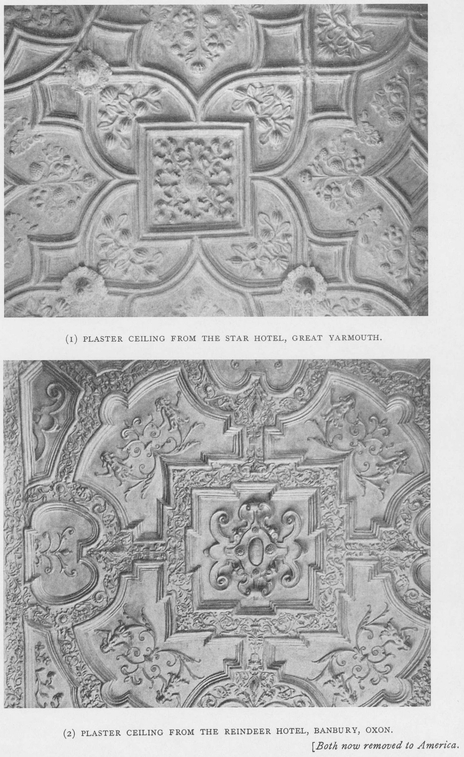FRENCH RENASCENCE
At the close of the 15th century the Italian Renascence began to exert its influence upon the vigorous and beautiful Gothic art of France, Charles VIII. 1483-89) inviting the Italians, Fra Gioconda, Paganino, Boccador, and various Italian craftsmen to assist in building the castle at Amboise.
At first the influence of the Italian Amboise School was confined to the smaller architectural features, but at the commencement of the 16th century, the classic orders of architecture and the delicate arabesques of Italy, were incorporated with the high-pitched roofs, mullioned windows, dormers, crocketed gables and pinnacles of the beautiful flamboyant Gothic, and fused into the style known as the French Renascence, which is usually divided into distinct characteristic periods, viz. :—I., François Premier, 1515-47; II., Henri Deux and Henri Quatre, 1547-1610; III., Louis Treize, 1610-43; IV., Louis Quatorze, 1643-1715; V., Louis Quinze, 1710-70; VII., Louis Seize, 1774-89 ; and VIII., The Empire, 1790-1830.
Typical examples of the early Renascence architecture are seen in the numerous châteaux planned upon the earlier type of fortified house, that of Chambord (1526), which is singularly flamboyant in style, has circular towers at the angles and flanking the entrance, with a roof of cones and cupolas having high dormer windows and chimneys.
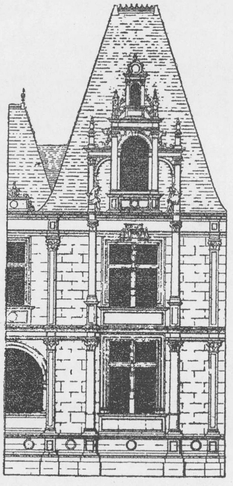
The Italian influence received a stimulus from François I., who in 1530 invited II Rosso to the Palace of Fontainebleau, and Rosso was followed in 1531, by the painter Francesco Primaticcio. The decoration of “ Galerie de François 1er ” in this palace by these Italians consists of figure subjects in fresco, surrounded with cartouches, and figures in stucco. A panel (fig. 1, plate 32) is a representative example of this period, showing the emblem of the King, a salamander, in a cartouche. Emblems of the various kings and queens are important decorative features in French Ornamental Art.
Plate 32

Plate 33
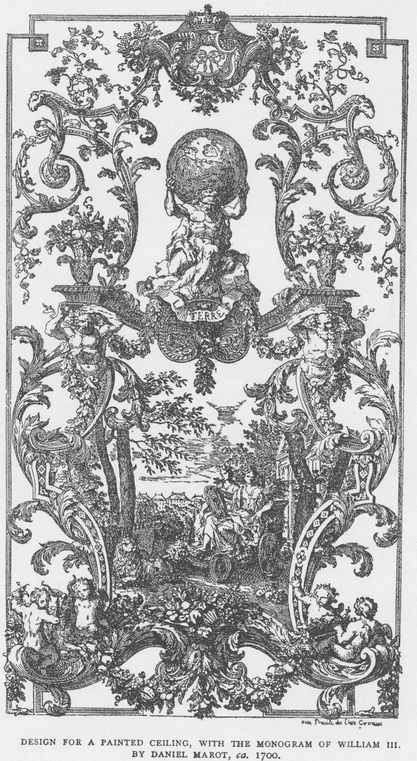
Plate 34

Plate 35
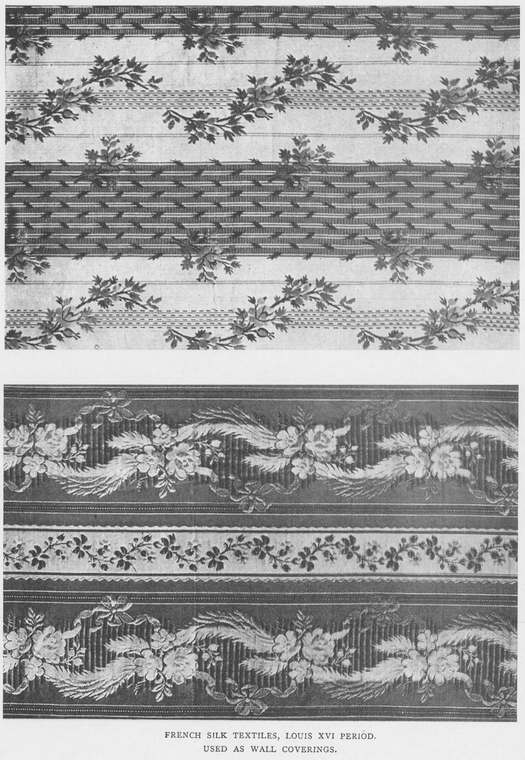
In 1541 the architect Sebastiano Serlio, and the goldsmith Benvenuto Cellini, joined the “ School of Fontainebleau,” which undoubtedly exercised a controlling influence upon the contemporary French architects, Jacques Androuet du Cerceau, Pierre Lescot, Philibert de l’Orme, and Jean Bullant, and the sculptor Jean Goujon.
The Louvre was commenced by Lescot, who built the south-west angle, which was enriched with sculpture by Goujon. These two also collaborated in the building of the beautiful Fontaine des Innocents at Paris (1550), with its fine low relief panels of draped figures.
The reign of Henri II. was a period of remarkable activity in the Arts ; during this reign and that of Henri IV., the prevalence of interlaced strap-work, delicate reliefs, and the liberal use of the cartouche are the characteristic features. These are seen in the Oiron or Henry Deux pottery (plate 56), the geometrical interlacings of the Grolier bindings (plate 73), and the book illustrations of Orance Fine and Jean Cousin.
The Ballroom or “ Galerie de Henri II.” at Fontainebleau has a richly coffered ceiling of wood by de l‘Orme, and the wall painted in fresco by Primaticcio (1564). P. de l’Orme commenced the Tuileries, and Du Cerceau and Duperiac continued the building of the Louvre.
During the Louis Treize period, the tradition of fine architecture and ornament continued, but was considerably influenced by the Spanish and Flemish barocco. The Luxembourg Palace was built by Salomon de Brosse in 1615-24. Other architects of this period were Jacques le Mercier, who continued the Louvre, and François Mansart, who built the new wing at Blois.
The decorative work was chiefly under the control of Simon Vouet, a prolific painter and designer who largely used the “ barocco ”style characterized by a twisted and broken cartouche, together with masks and a massive type of arabesque. The beautiful book-bindings by the brothers Eve (plate 73) are fine examples of the more delicate ornamentation of this period.
Louis le Vau, the architect, and Charles le Brun, the painter, were the chief men who controlled the arts during the early period of the long reign of Louis Quatorze, Jules Hardouin Mansard, Jean le Pautre, and Jean Berain during the later period. Le Vau continued the building of the Louvre, the Tuileries, and Versailles, and Le Brun painted his finest decorative work in the “ Galerie d’Apollon ” at the Louvre, and the “ Galerie des Glaces ” at Versailles (1662-84), which was remodelled by Mansart in 1680.
The voluminous festoons and arabesques of Le Pautre and Jean Berain (plates 32 and 74), the beautiful Rouen pottery by Louis Poterat, and the inlaid furniture by André Boulle, are representative of the decorative arts during the latter part of the reign of Louis Quatorze, one of the most important architectural works being the colonnade and east front of the Louvre by Claude Perrault.
Plate 36
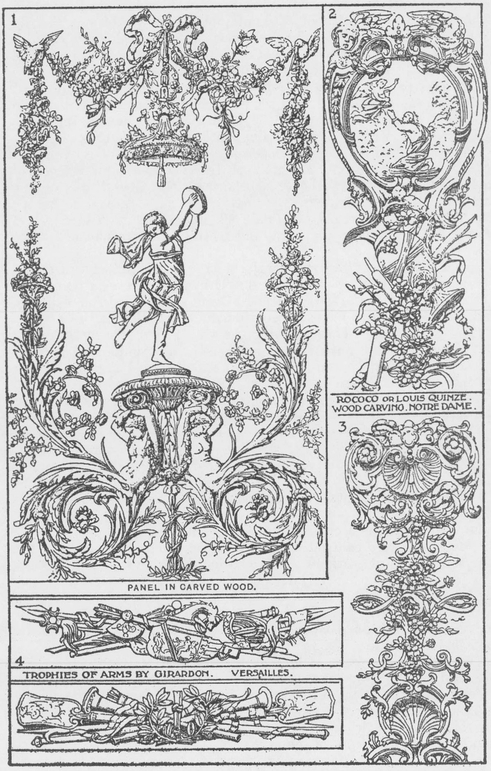
Plate 37
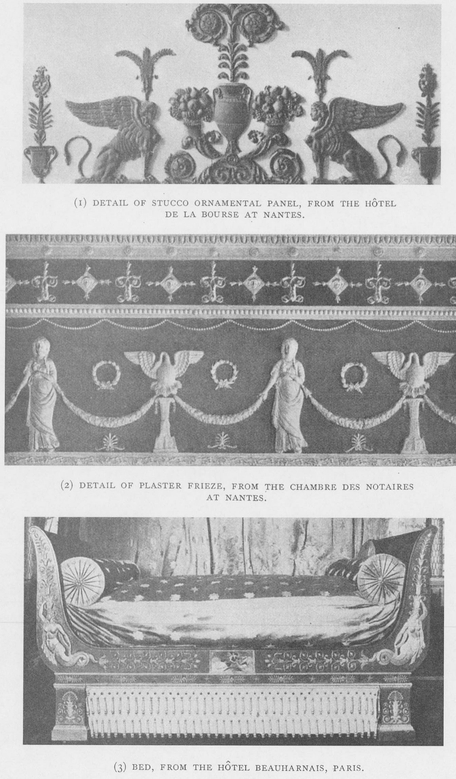
The REGENCY, under the Duke of Orleans, was a period remarkable for the development of the “ Rocaille,” or Rococo, type of ornament in the hands of Just Aurèle Meissonier and Gilles Marie Oppenord. In this rocaille, or scroll and shell work, symmetry was systematically avoided, the ornament showing no restraint or reticence of line or detail, reliance being placed upon the brilliancy and playfulness of modelling and design for effect.
The “rocaille ” of the Regency continued to be the chief decorative feature of the Louis QUINZE. Rooms had shallow vertical panelling, the lines formed of broken curves and scrolls terminating in shell forms and ribbons (plate 34). The acanthus is replaced by the palm as the chief element in the ornamentation, which in spite of its shallow pretence, is attractive, and was in keeping with the social and civic life of the period. J. Verberckt, Nicolas Pineau, and Jules-Antoine Rousseau are the chief carvers associated with the decorative work of the Louis Quinze.
The architecture, unlike the ornamentation, had a greater severity and dignity of style in the hands of Robert de Cotte, Germain Boffrand, and Ange Jacques Gabriel, the latter being the architect of the Place Louis XV. and of the Petit Trianon (1762-68), one of the most perfect small houses of this period.
Under Louis SEIZE, insistence is laid upon symmetry in the arrangement of the ornament, and reticence and delicacy of treatment in the details, which consist of the olive, myrtle, and the lily, with swags and garlands and flowers interwoven with ribbons. The cartouche is eliminated, and the oval medallion or tablet takes its place. Room decorations were frequently in pale colours or white and gold, with delicate stucco or painted ornament and panels. Distinguished ornamentists of this period were Delafosse, Cauvet, Salembier, Lalonde, with the ebenistes Riesener and David Roentgen and Gouthière, the worker in metal. Representative architects are Jules Nicolas Servandony, and Soufflot, the architect of S. Geneviève (Panthéon).
The period known as the EMPIRE was one of artistic activity characterized by a cold classic formalism founded upon Greek and Roman models. The elements of the ornamentation were the anthemion, acanthus (plate 37), pateræ, urns, and cornucopias, intermingled with the palm and olive symmetrically arranged, frequently arranged upon diagonal lines, with circular medallions and lozenge shapes.
The chief artists of this period were Charles Normand the architect, and Charles Percier, who in collaboration with P. L. Fontaine, controlled the principal decorative work.

AN ANTHEMION FRIEZE BY P. N. BEAUVALLET, 1820.
Plate 38
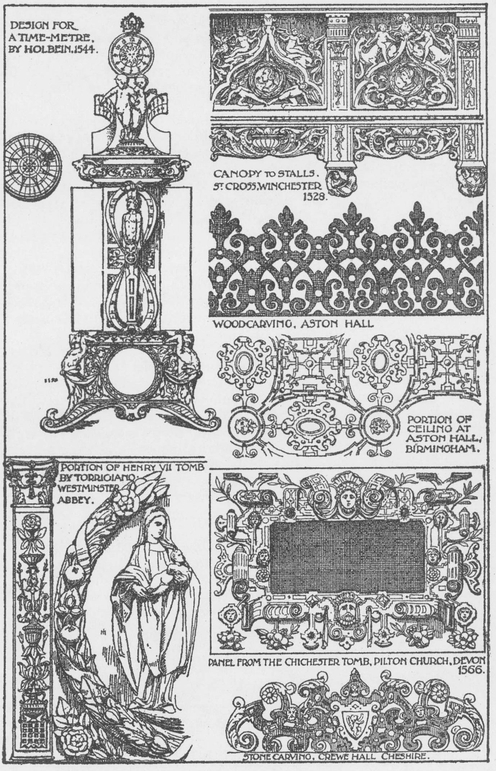
Plate 39
